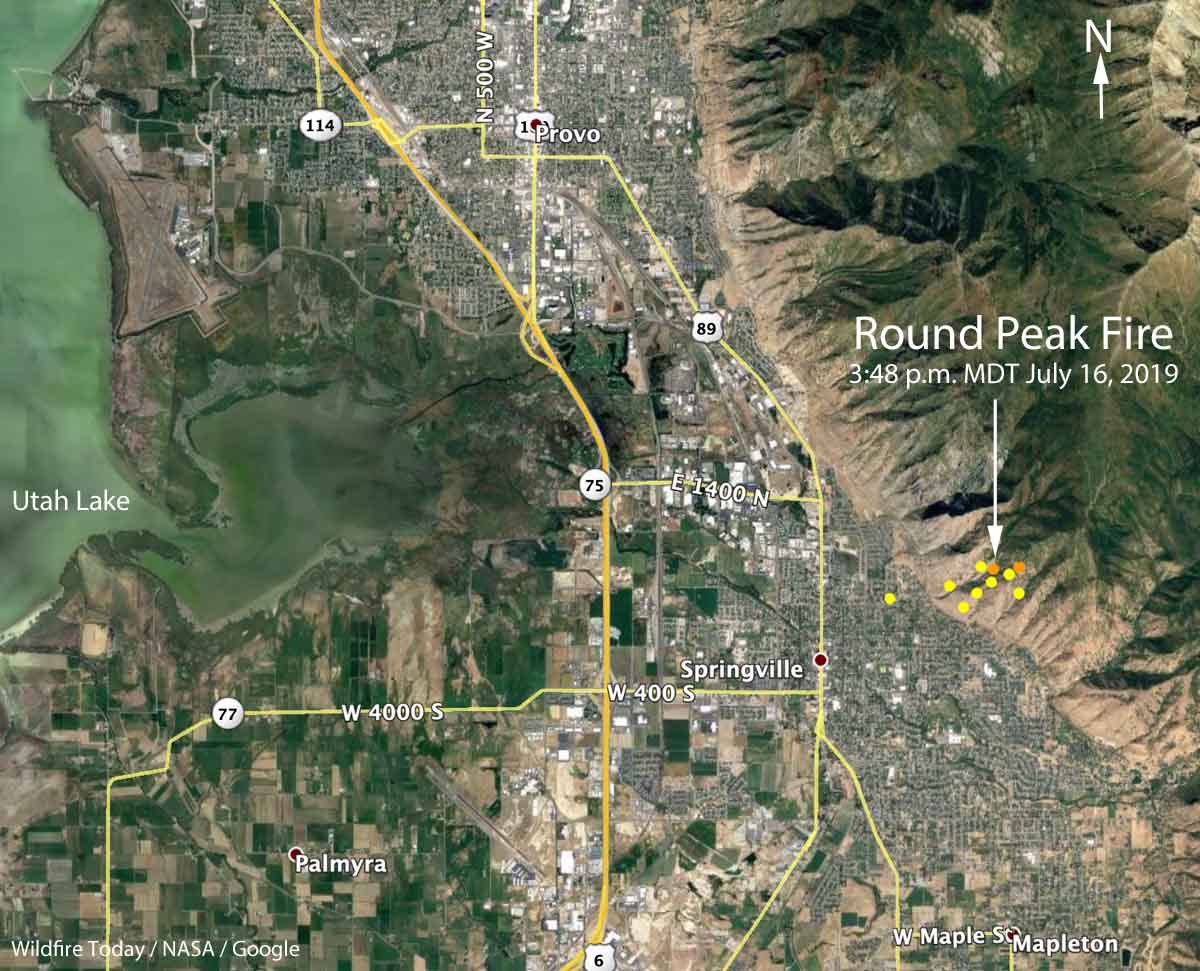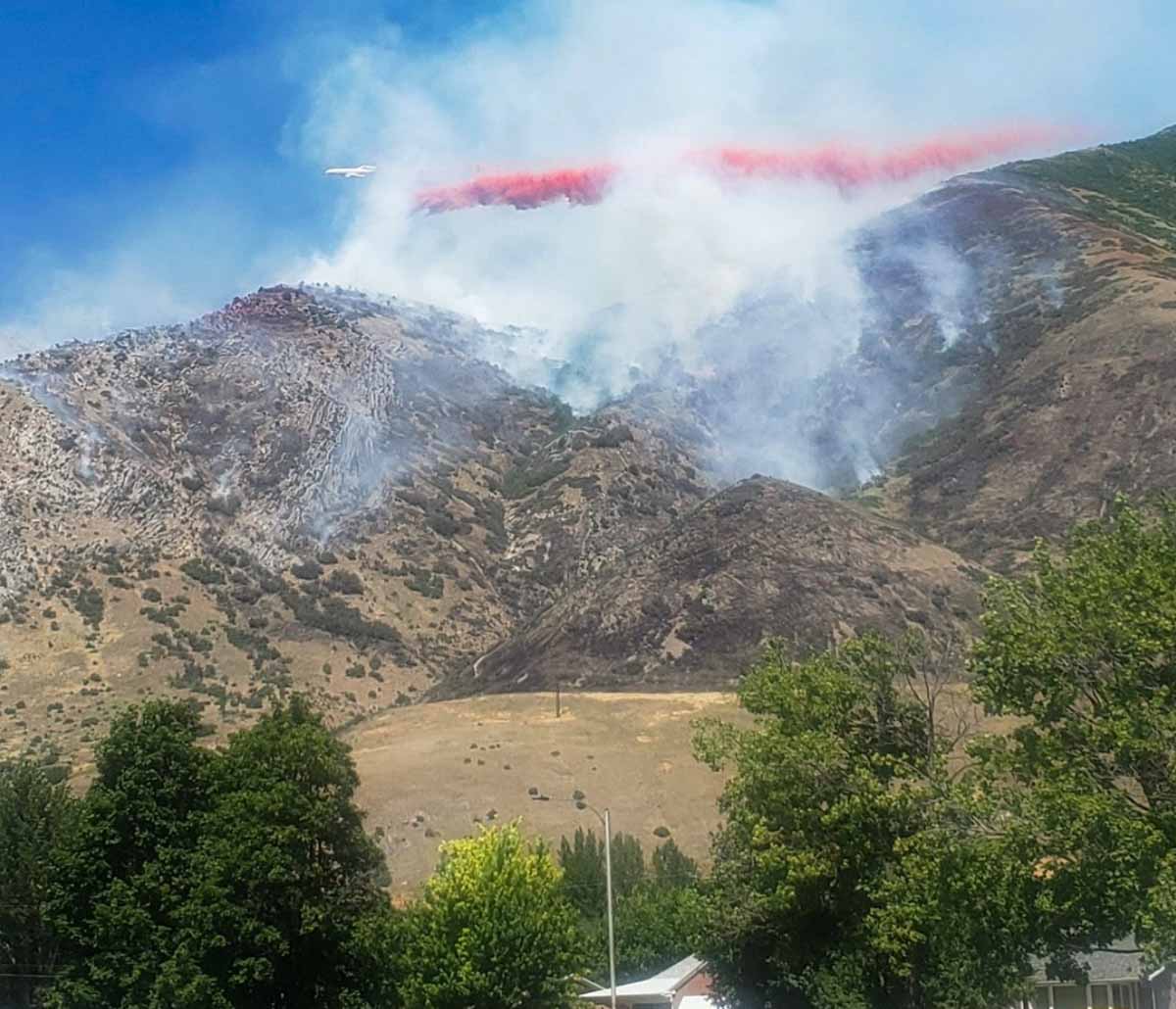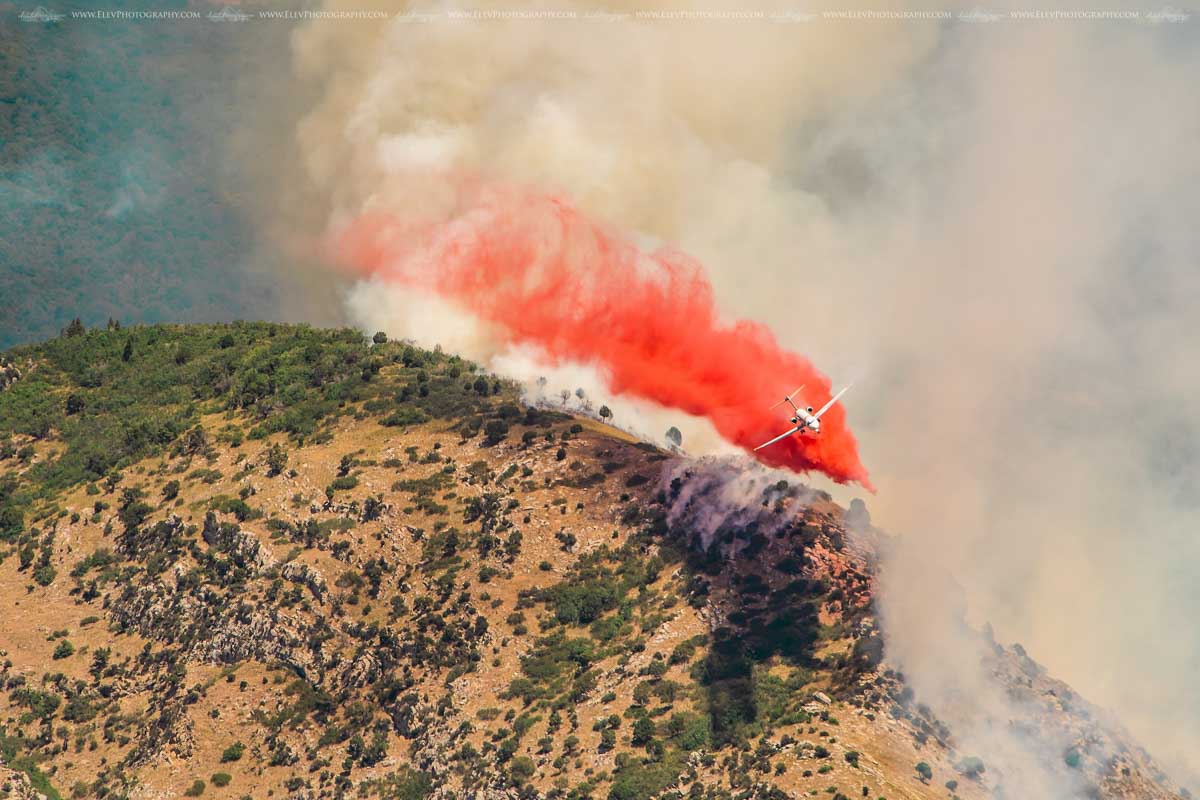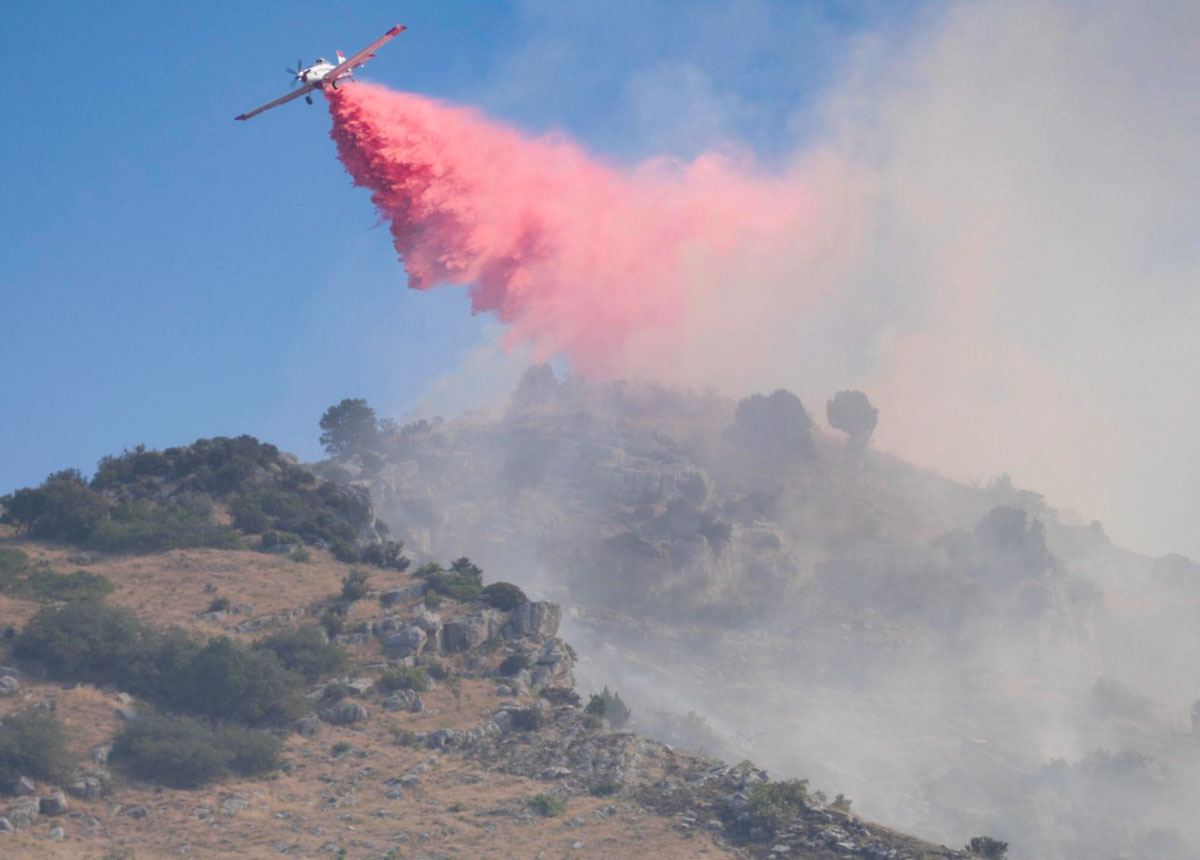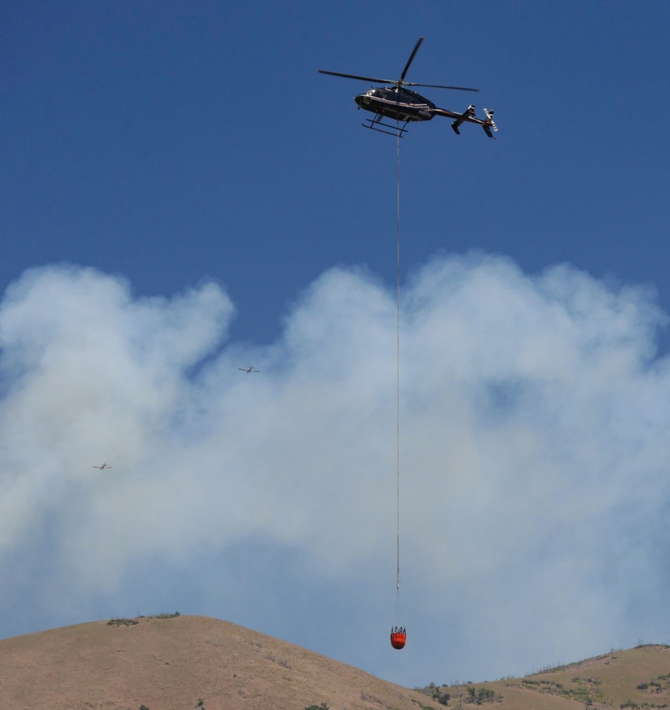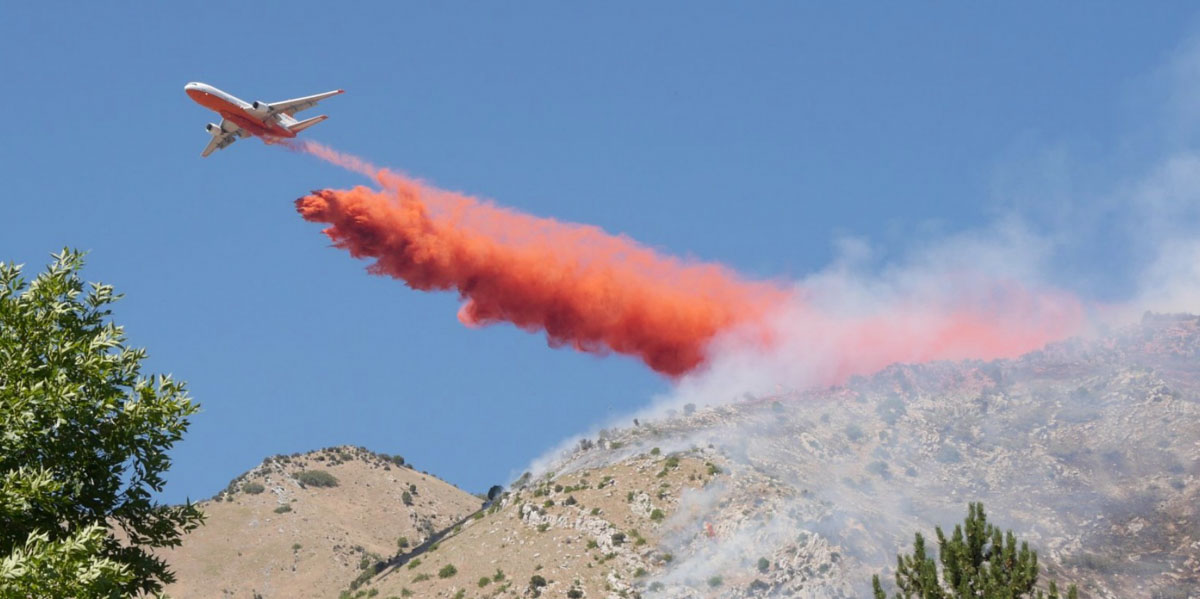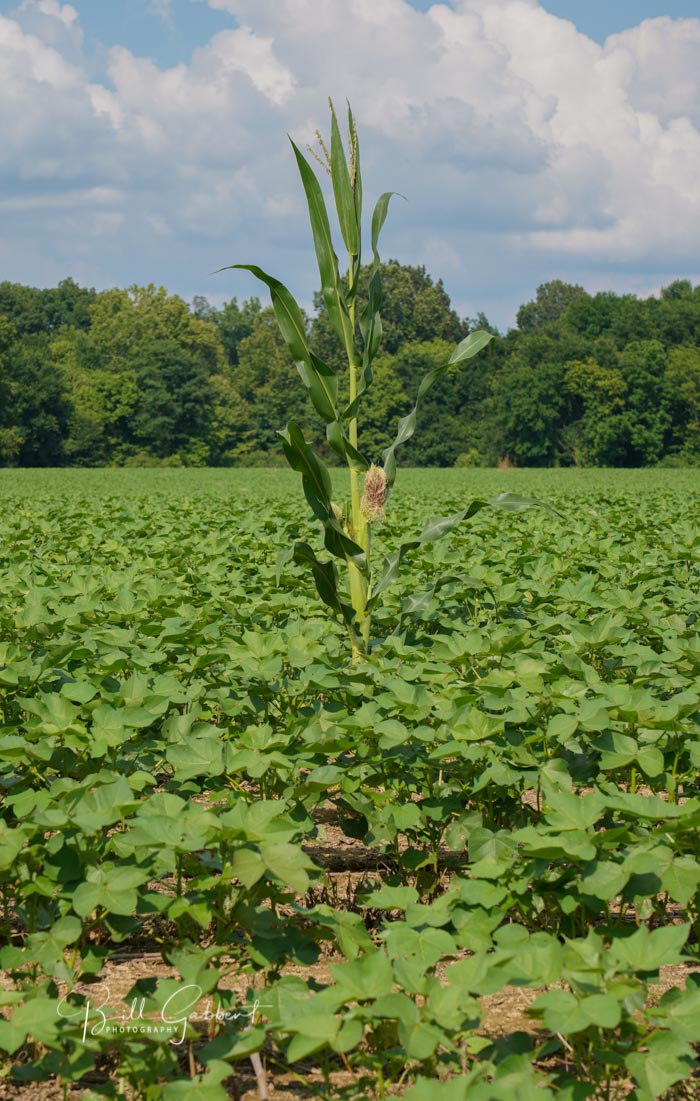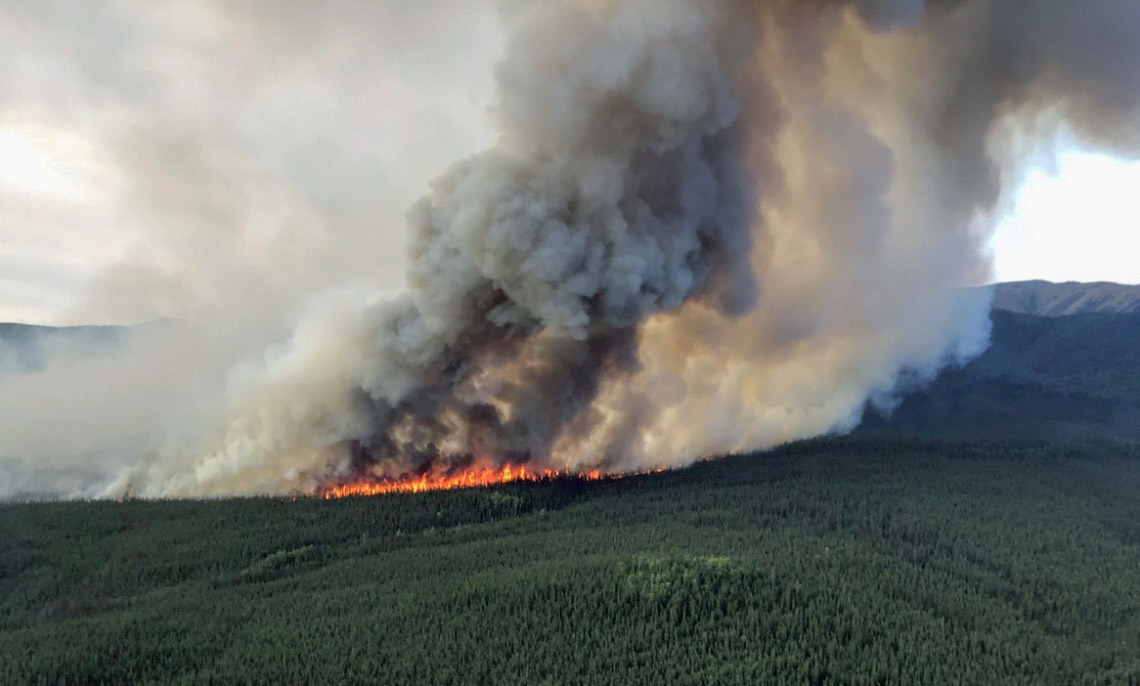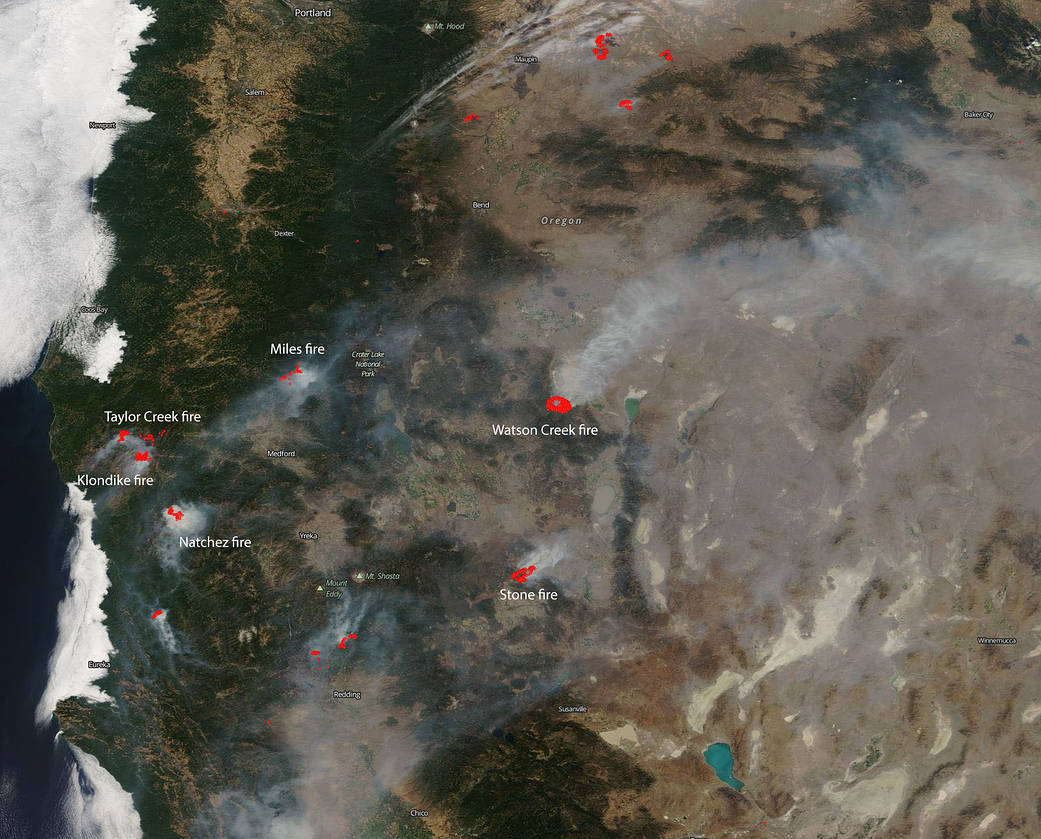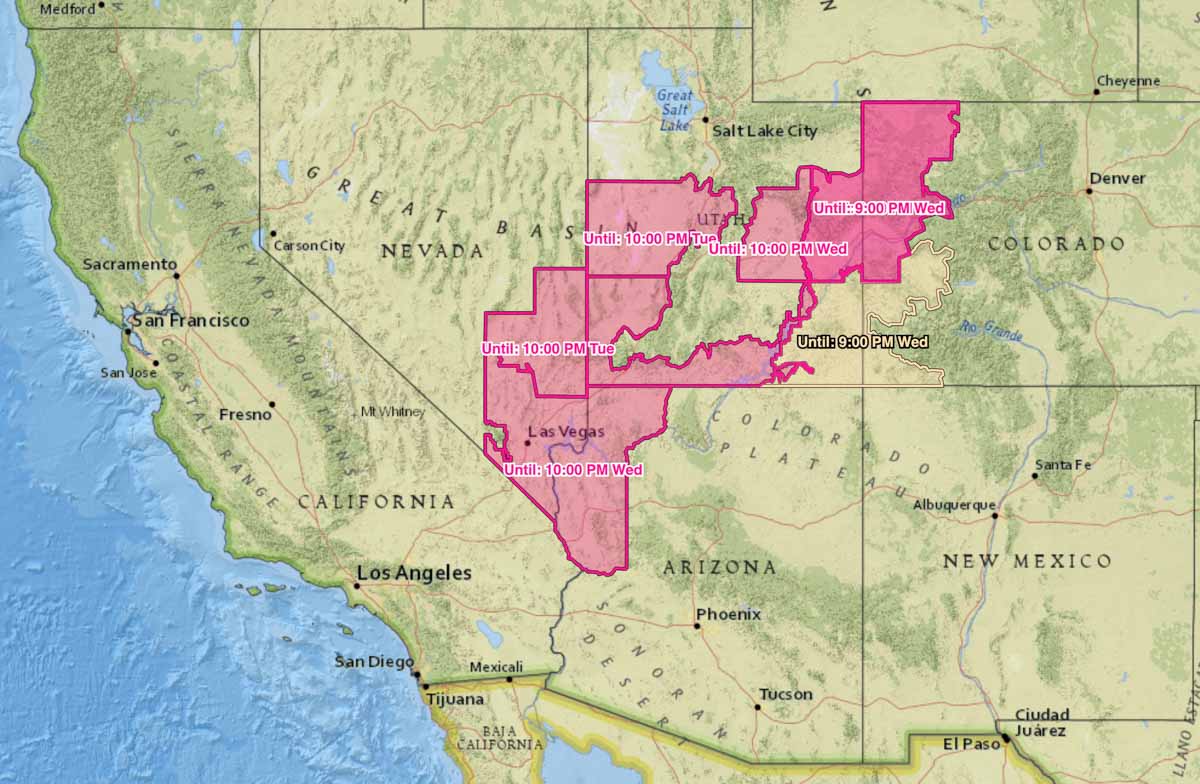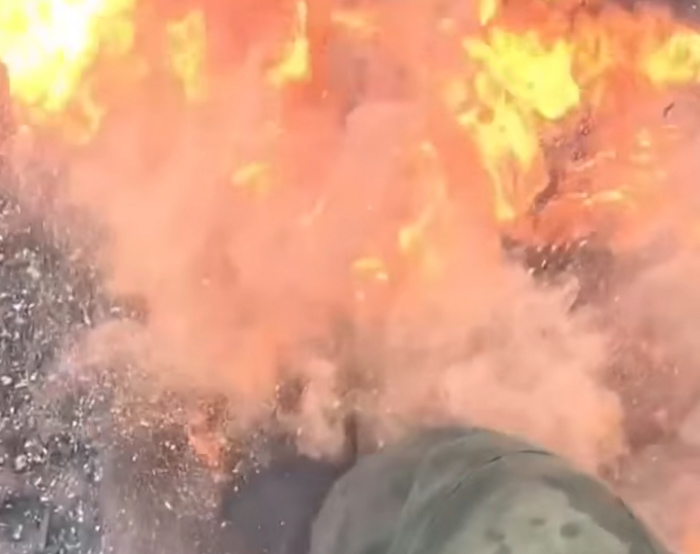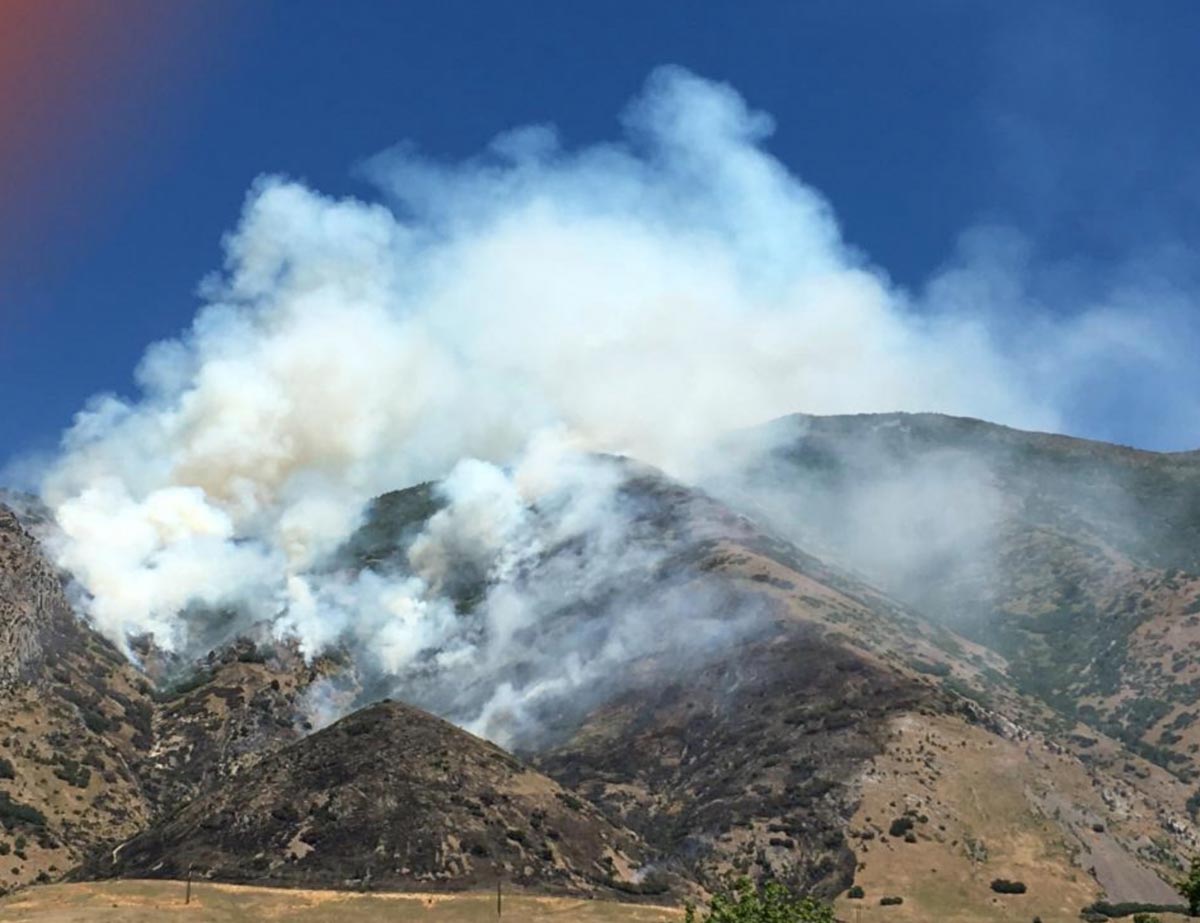
A wildfire just east of Springville, Utah (see the map below) burned 167 acres before it was stopped by firefighters yesterday. At Wildfire Today we don’t often devote an article to a fire this size, but the Round Peak Fire is notable in two ways. One, that the U.S. Forest Service employed a different strategy from what they used last summer on the Bald Mountain and Pole Creek Fires about 8 miles to the south. Those fires were initially managed to accomplish resource management objectives. In other words, they were not suppressed, just herded around. As the Uinta-Wasatch-Cache National Forest inadequately considered fuel moistures, drought, and the weather forecast, the two fires merged and burned over 120,000 acres forcing evacuations of communities.
But the Round Peak fire, ignited by a campfire at 9:30 p.m. July 15, was suppressed. The resources the Forest Service used included 4 hand crews, 2 helicopters, 4 Single Engine Air Tankers, 1 large air tanker (MD-87), and 1 Very Large Air Tanker (DC-10).
In the video below it is difficult to determine what type of fixed wing aircraft it is, but it appears to be a DC-10, especially considering the length of the drop.
#uwcnf Thanks to Collin Steadman for this great video of a retardant drop on the #RoundPeakfire today, July 16th. pic.twitter.com/bskUJnShHn
— Utah Fire Info (@UtahWildfire) July 17, 2019
In addition to the Forest Service aggressively attacking this new fire, another reason we are writing about this fire is that numerous photos of the fire are available, supplied by Utah Fire Info and the Uinta-Wasatch-Cache National Forest.
